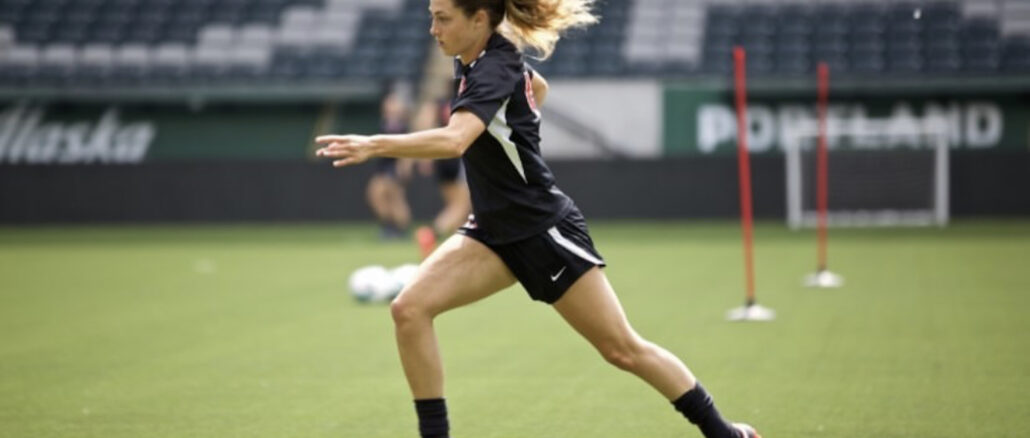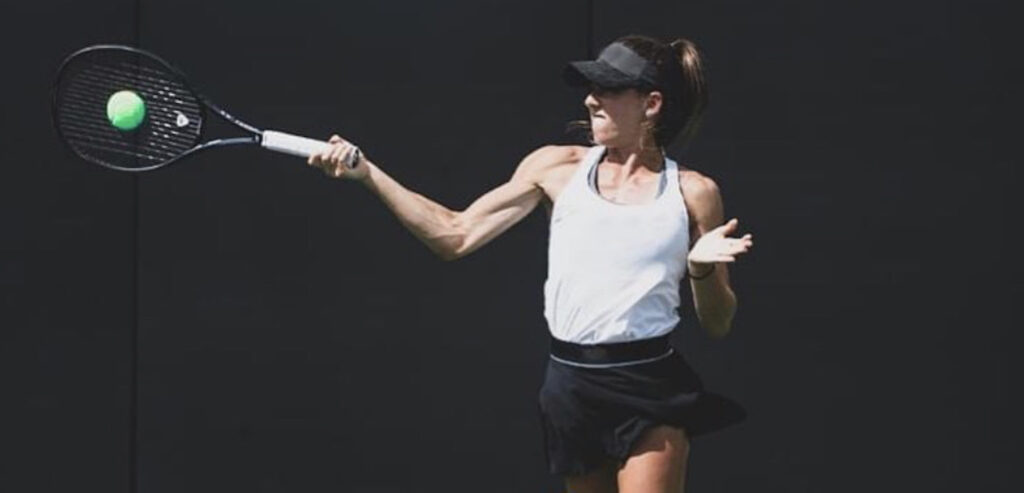
Last year alone, the salaries for the entire WNBA was $12 million, while NBA player Stephen Curry’s salary this year is roughly $40 million.
Many of the world’s greatest female athletes are far behind their male counterparts when it comes to their salaries. Sports like soccer and basketball are fighting for equality while tennis is one of the few sports with equal pay.
“This gap comes from systemic issues where for so long, women’s sport wasn’t promoted and now we’re seeing the impact of that system,” Sport Administration Professor Alicia Jessop said. “If we want to see change here, we have to break the system by taking the playbook that the men’s sports use and follow that.”
Some factors in why female athletes get paid less include media coverage and the revenue produced. Female student athletes said the gap is demoralizing to women, and support how the U.S. Women’s Soccer and the WNBA players are leading the way in the first for equal pay.
Varying salaries between highest paid athletes
When it comes to women and men in professional sports, there is a significant difference in what each can make per year. In the WNBA, the highest paid athlete DeWanna Bonner will only bring in $215,000.
However, the two highest paid athletes in the NBA, Stephen Curry and Russel Westbrook, make roughly $40.2 and $38.5 million, Jeremey Cluff wrote in a February 11, 2020 azcenral.com article. In 2019, the average salary in the NBA was around $8.3 million while the average for the WNBA was about $75,000.
The minimum salary for a male in Major League Soccer is roughly $56,250, while the minimum for a player in the National Women’s Soccer League is around $16,538, Connor Fleming wrote in a February 2019, the18 article.
Media for women in sport is well below male counterparts
For almost three decades now, media companies have spent billions on TV deals for live sports content, with the majority of the contracts being for male sports, Olivia Abrams wrote in a June 2019 Forbes Times article.The result is a major increase in player salaries for professional sports leagues like baseball, soccer and basketball because of the revenue they are able to produce.
Jessop said the problem between women and men’s soccer is that no matter how poorly the men play, the revenue they generate is much more because of the World Cup. The World Cup is the most watched sporting event in the world, even more so than the Olympics. This allows its employees — male soccer players — to be paid more money.
“The WNBA generates roughly $25 million annually from its TV deal with ESPN,” Abrams wrote. “The NBA’s TV revenue from ESPN and TNT is 100 times that.”
Through broadcasting contracts, ticket sales and sponsorships, there’s a lot of money that comes into sports franchises for men.
“Most WNBA games aren’t even shown on television,” Jessop said. “The broadcasting money and sponsorships are a place where I think the WNBA has hugely missed the mark. The leaders of the WNBA and agents for these women are beginning to recognize that these women are role models, and our society is hungry for good female role models. They just haven’t been placed properly into the media.
Women’s tennis players lead female athletes in their salaries
“Tennis players are the only female athletes to rank among the overall top earners over the past decade, with Serena Williams, Maria Sharapova and Li Na all having appeared multiple times on Forbes’ list,” Abrams wrote.“In fact, the top nine highest paid athletes for women are tennis players.”
Female tennis players ranking amongst the top when it comes to their salaries is a big stride for female athletes who don’t see themselves getting the same opportunities.
There is equal prize money in all four major tennis tournaments for male and female athletes, according to a 2016 BBC News article. This includes the Australian Open, U.S. Open, French Open and Wimbledon. Masters Events like Indian Wells and Miami pay the same to men and women as well.
“In tennis, we’re pretty lucky because the pay is pretty similar,” said Lexi Ryngler, a Women’s Tennis player, sophomore transfer and undeclared major.. “In the Big Grand Slam, the prize money is equal where other sports don’t get the same benefits.”

While many female athletes face the reality that their respective sports will not have equal pay, Ryngler finds herself lucky to know that her sport is not one of those included. She’s still well aware of the issues that other women athletes will face when it comes to playing professionally.
“I didn’t always pay attention to the wage gap but I started to pick up on how it’s affected athletes in other sports,” Ryngler said. “Everyone is working super hard at their job and giving all of themselves to their sport but a lot of times female athletes don’t get the same credit as males.”
The wage gap as a burden for female athletes
For many female athletes, the wage gap can be a difficult notion to deal with.
“I think that the lower pay rate is hard for a lot of female athletes,” said Monique Andriuolo, Women’s Basketball player and junior liberal arts major. “It’s difficult because women are working just as hard, if not harder, than the men and yet still receiving way less pay. It can feel degrading to know that no matter how much effort you put into your sport, it’s still not going to change the fact that the men are making more money than you.”
Jane Nwaba, Women’s Basketball player and freshman undeclared major, believes that women aren’t seeing the pay they deserve.
“Women deserve equal pay, or at least much more than they are receiving now,” Nwaba said. “They work hard to be in the positions that they are in their careers and their pay should somewhat represent that. It’s unfair that the best professional athletes who are women make the same amount, if not less than the worst male players.”
Aubrey Roberts, Women’s Volleyball player and sophomore psychology major, , said she thinks the pay gap affects women in their mental game in sport.
“There’s already so many factors they already have to worry about,” Roberts said. “When looking at male athletes salaries compared to their own I’m sure it can mess with their mentality to stay motivated at times. I think we’re moving in the right direction as a society to give females more respect but it still isn’t where it needs to be.”
The love for the game might not be stronger than the effects of the wage gap
The question at hand is whether or not the passion for the game will inspire female athletes to want to pursue professional careers in their respective sports. For some, the love for the game will be enough, but for others, it might not be realistic.
“I think that not as many women want to continue professionally after college because there is such a pay gap,” said Katy Byrne, former Pepperdine Women’s Soccer player and current Portland Timbers midfielder. “I always wanted to play professional soccer no matter what the pay was. I play professionally because I love the game, not for the money.”
For Trinity Watson, Women’s Soccer player and junior integrated marketing communication major, the love for the game is just as important to her. Her goal is to get drafted out of college and play professionally in the U.S. or even overseas.
She said the lower pay rate wouldn’t play a role in whether she pursued a professional career or not because her love for the sport will never change.
“I will always choose to play my sport, even under any conditions,” Watson said.
On the other hand, Isabel Montoya, Women’s Basketball player and freshman sport administration major, said the wage gap has made her question whether she would want to pursue a professional career.
Montoya said she would definitely have to take the pay gap into consideration.
The U.S. Women’s National Soccer team using their force and platform for change
Just three months before the start of the 2019 World Cup, members of the U.S. Women’s National Soccer team filed a gender discrimination lawsuit against the United States Soccer Federation, David K. Li and Jay Varela wrote in a March 8, 2019 NBC article. The players said gender discrimination is reflected in their pay, medical treatment, travel arrangements and overall workload.
“I think it was a smart and effective decision because it was the only way they would’ve been taken seriously,” Watson said. “I have been inspired to stand up for what I believe in and properly take action in order to support and appreciate my position.”
Players protested against the U.S. Soccer Federation before a match back in March, the Associated Press wrote in a March 2020 NBC article. Each player turned their jersey inside out during the playing of the national anthem to hide the U.S. Soccer logo.
Byrne, like Watson, supported their actions.
“I love it,” Byrne said. “It’s overdue and they are using their platform and voice to fight for women in sport. They’re laying the foundation for the generations of female soccer players and female athletes in general in the future to be treated and paid what they deserve and demanding respect.”
In their lawsuit, it stated that Women’s National Team players would earn a maximum of $99,000 or $4,950 per game, while similarly situated male Men’s National Team players would earn an average of $263,320 or $13,166 per game, Timothy Rapp wrote in a June 2019 article for Bleacher Report.
“This is a group of women that has superiorly outperformed their male counterparts in the last four years,” Jessop said. “They’ve won an Olympic gold medal and they’ve won a World Cup. Where the men’s team has failed to even qualify for the World Cup in that same time period.”
Unless someone is among the absolute best of the best, the income alone for many professional soccer players is not a sustainable one.
“I have to get side jobs while playing soccer professionally,” Byrne said. “I have to drive for Uber Eats and coach as well.”
New collective bargaining agreement shows glimpse of improvement for WNBA players
Every year since the WNBA began in 1997, the highest-paid women’s basketball player has earned less than the lowest-paid NBA player, according to research from Adelphi University.
“This is not purely about salaries,” Los Angeles Sparks star Nneka Ogwumike, the president of the union, wrote for The Players’ Tribune. “This is about small changes the league can make that will impact the players. This is about a 6 foot 9 inch superstar taking a red-eye cross-country and having to sit in an economy seat instead of an exit row.”
The WNBA and the Women’s National Basketball Players Association announced in January that they reached an agreement on a new collective bargaining agreement (CBA). With this new eight-year agreement, professional women’s basketball players will see salaries that were never possible before.
The CBA includes an increase in total cash compensation, consisting of base salary, additional performance bonuses, prize pools for newly created in-season competitions, and league and team marketing deals, according to the WNBA website.
Under the new CBA, the league’s top players will be able to earn up to $500,000, compared to earning less than triple that amount before. The average cash compensation for players will exceed six figures, resulting in a major increase for all players, from rookies to veterans.
“What the WNBA did in January by entering into a new collective bargaining agreement that sees WNBA players paid the highest they’ve ever been paid is a huge step for these female athletes,” Jessop said. “However, the most a WNBA player will make in a whole year is what some of the worst NBA players will make from one game.”
Malia Bambrick completed the reporting for this story in Jour 241 in Fall 2021 under the supervision of Dr. Christina Littlefield and Dr. Theresa de los Santos. Dr. Littlefield supervised the web version of the story.




